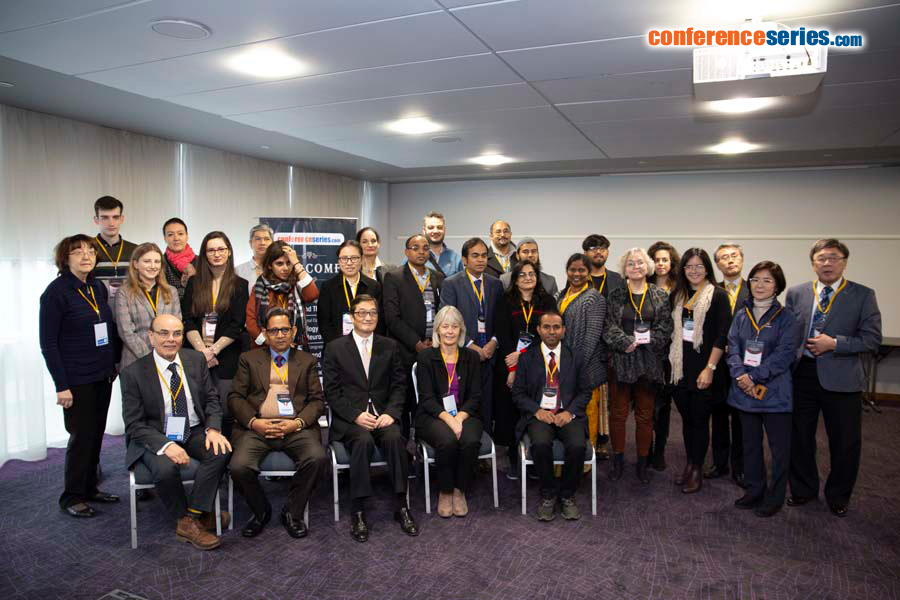
Gianella Alejandra Liabeuf Altamirano
University of Chile, Chile
Title: Role of cellular senescence in the mechanism of the reverse association between cancer and cognitive impairment type Alzheimer
Biography
Biography: Gianella Alejandra Liabeuf Altamirano
Abstract
Cancer and Alzheimer's disease (AD) are prevalent diseases associated with aging. Epidemiological studies have evidenced an inverse association between both, proposing a common biological mechanism deregulated in opposite directions. In both age-related pathologies, senescent cells have been identified. Measurement of senescence markers could help to understand the underlying common biological process and mutual protection between cancer and AD. The objective was to study cellular senescence and senescence associated secretory phenotype (SASP) in lymphocytes of four groups of patients: (1) with mild cognitive impairment Alzheimer type (MCI type Alzheimer), (2) with history of cancer without cognitive impairment, (3) patients with both diagnoses and (4) healthy controls, of both sexes and comparable ages. Senescence was measured by β-galactosidase (β-gal) activity by flow cytometry and the presence of p16 INK4A by western blot. β-gal at basal level showed greater activity in the group MCI type Alzheimer group compared to the others, although it did not reach significance. However, upon exposure to a senescence stimulus H2O2 10 µM, the MCI type Alzheimer group showed significant increase in β-gal activity (p = 0,0307) compared with the value without stimulus (p = 0,2385). The presence of p16 INK4A showed no difference between groups. Expression levels of SASP- markers (IL-6, IL-8) were determined by qPCR. The MCI type Alzheimer + Cancer group showed greater expression of IL-6 and IL-8 compared with Control group (p=0,0175; p= 0,0259 respectively). Increase in IL-6 and IL-8 in the MCI type Alzheimer + Cancer suggests that presence of both pathologies represents a situation of inflammation that might be explained by a high level of cognitive deterioration present in this group. Our results support the hypothesis of lymphocyte susceptibility to cell death as a biomarker and that alterations occurring in AD do not necessarily have their origin at central nervous system level.
Recent Publications:
-
Behrens, M. I., Lendon, C., Roe, C. M. (2009). A common biological mechanism in cancer and Alzheimer's disease? Current Alzheimer Research 6(3); 196-204.
-
Campisi, J. (2013). Aging, cellular senescence and cancer. Annual Review of Physiology. 75, 685-705.
-
Campisi, J., Andersen, J., Kapahi, P., & Melov S. (2011). Cellular senescence: A link between cancer and age-related degenerative disease? Seminars in Cancer Biology. 21, 354-359.
-
Vandenberk, B., Brouwers, B., Wildiers, H. (2014). p16 INK4a: A central player in cellular senescence and a promising aging biomarker in elderly cancer patients. Journal of Geriatric Oncology. 2; 259-269.
-
Interleukin-6 in Aging and Chronic Disease: A Magnificent Pathway. The Journals of Gerontology. Series A, Biological Sciences and Medical Sciences. 61(6); 575–584.


